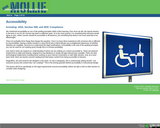
Accessibility in Online Learning
- Subject:
- Education
- Material Type:
- Activity/Lab
- Reading
- Provider:
- AEA
- Provider Set:
- OLLIE
- Author:
- Evan Abbey
- Date Added:
- 12/03/2018

Accessibility in Online Learning
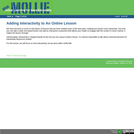
Adding Interactivity to an Online Lesson
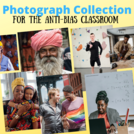
This collection was inspired by Ellen Wolpert's article about anti-bias work with younger students. Her article suggests that teachers should keep a collection of non-stereotypical photos of people doing regular things that can be referenced to stimulate class discussion or address biased language with young children.
The photos in this growing collection are organized into (Google Drive) folders inspired by categories mentioned by Ms. Wolpert: Race, Age, Physical Abilities, Gender Roles, Families/Sexual Orientation, Jobs, and Ethnicity. Each folder contains different photographs curated from various Creative Commons websites, including Unsplash, Pixabay, and Pexels. Currently there are 80 photographs in the collection. They have been assembled here for your convenience and represent many hours of searching, downloading, and editing.
Reference: Wolpert, E. (2006). Photo picture cards: A key tool for the anti-bias classroom. In Lee, E., Menkart, D., & Okazawa-Rey, M. (Eds.) Beyond heroes and holidays: A practical guide to K-12 anti-racist, multicultural education and staff development (3rd ed., pp. 211-214).

This resource is a modification of the Washington Models for the Evaluation of Bias Content in Instructional Materials (2009) that is made available through OER Commons under a public domain license. This resource attempts to both update the content with more contemporary vocabulary and also to narrow the scope to evaluating still images as they are found online. It was developed as a secondary project while working on a BranchED OER grant during summer 2020. It includes an attached rubric adapted from the Washington Model (2009).
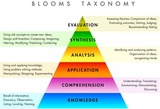
THE BLOOM'S CLASSIFICATION OF EDUCATIONAL OBJECTIVES IS REALLY A PATH SHOWING TO THE TEACHERS OF ALL CATEGORIES i.e. PRE PRIMARY, PRIMARY, MIDDLE SCHOOL, SECONDARY, SENIOR SECONDARY AND EVEN TEACHERS AT HIGHER EDUCATION. IT GUIDES ABOUT THE GOALS TO BE ACHIEVED IN THE CLASSROOM BY THE TEACHERS.

Sample module from Alabama A&M University
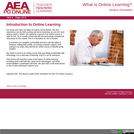
What is Online Learning?
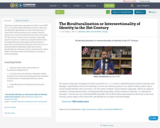
This lesson and project emerged out of the course EDU 311: C, D, and E in Global Education (Culture, Diversity, and Equality). Specifically we look at the diversity of voices and cultures present in our nation’s history, which may or not be located directly in the curriculum. For this reason students, future teachers especially, need to be aware to omitted or misrepresented voices, including diversity responsibly, and be sensitive to diversity or multicultural education. The text we use is Diversity Matters (Spradlin, 2012) which delves specifically into dominant culture and minority culture helps to first frame then self identify the concept of intersectionality.

This resource was created by Marshall Payer in collaboration with Aaron Delhay as part of the 2019-20 ESU-NDE Digital Age Pedagogy Project. Educators worked with coaches to create Unit Plans promoting BlendEd Learning Best Practices. This Unit Plan is designed for High School Mathematics.

LEARNING OBJECTIVESBy the end of this chapter, you will be able to:Define thinking and thoughtDescribe metacognition and how it applies to your learningIdentify the stages of the learning processDefine learning objectivesUse Bloom’s taxonomy to interpret learning objectives and adjust your expectations accordinglyExplain the model of strategic learningDescribe the relationship between emotional intelligence and self-regulationIdentify the types of thinking that contribute to successful intelligenceDescribe the role of creative thinking in the learning processIt is the mark of an educated mind to be able to entertain a thought without accepting it. —Aristotle, Greek philosopher
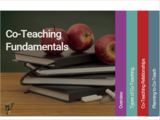
Co-Teaching FundamentalsThis 20-minute module provides foundational information about the practice of co-teaching. If completed independently, this content can be covered in approximately 20-minutes. If the module is facilitated using the guide, it may take up to one-hour.
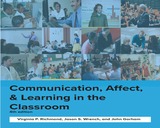
This book is an introduction to communication, affect, and learning in the classroom. The book was originally created as a way to introduce K-12 educators to instructional communication, but has been expanded to help College/University professors and Talent Development professionals as well.
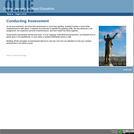
Conducting Assessment
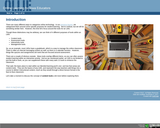
Content Tool Types for Online Learning
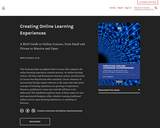
A Brief Guide to Online Courses, from Small and Private to Massive and Open
Short Description:
This book provides an updated look at issues that comprise the online learning experience creation process. As online learning evolves, the lines and distinctions between various classifications of courses has blurred and often vanished. Classic elements of instructional design remain relevant at the same time that newer concepts of learning experience are growing in importance. However, problematic issues new and old still have to be addressed. This handbook explores many of these topics for new and experienced designers alike, whether creating traditional online courses, open learning experiences, or anything in between.
Long Description:
The process of designing online courses often focuses on the methodology of taking certain steps to produce a product (the course). We feel that learning should be an experience more than a place run by a person constrained by specific designs. The goal of this book is to provide an updated look at many of the issues that comprise the online learning experience creation process. As online learning evolves, the lines and distinctions between the various classifications of courses has blurred and often vanished. Learning contexts run the gamut from small to massive, and from closed courses to boundary-less experiences. But how do we create something within this incredibly wide range? Classic elements of instructional design remain relevant at the same time that newer concepts of learning experience are growing in importance. However, problematic issues new and old still have to be addressed. This book aims to be a handbook that explores as many of these issues and concepts as possible for new and experienced designers alike, whether you are creating traditional online courses, open learning experiences, or anything in between. We also desire this book to be an ongoing process. Many issues and contexts were covered, many were not covered in enough depth, and many others were not covered at all. Our desire is that this book will begin a conversation that will add to future editions as more people join the writing team.
Word Count: 44682
(Note: This resource's metadata has been created automatically by reformatting and/or combining the information that the author initially provided as part of a bulk import process.)

Creating Online Learning Objectives
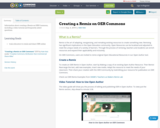
Information about creating a Remix on OER Commons, including a video tutorial and frequently asked questions.
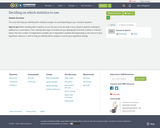
This chart will help you identify which statistical analysis to used depending on your research question.How to use: When deciding which statistics to use, first you must ask what is your research question looking for (difference or association). Then, identify what type of variable are you dealing with (Nominal, Ordinal, or Interval / Ratio), then the number of independent variables (IV) or dependent variables (DV) depending on the nature of your hypothesis. Below is a chart to help you identify which analysis to use for your hypothesis testing.
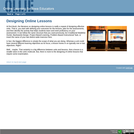
Video about designing online lessons.
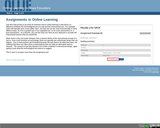
Developing Online Assignments